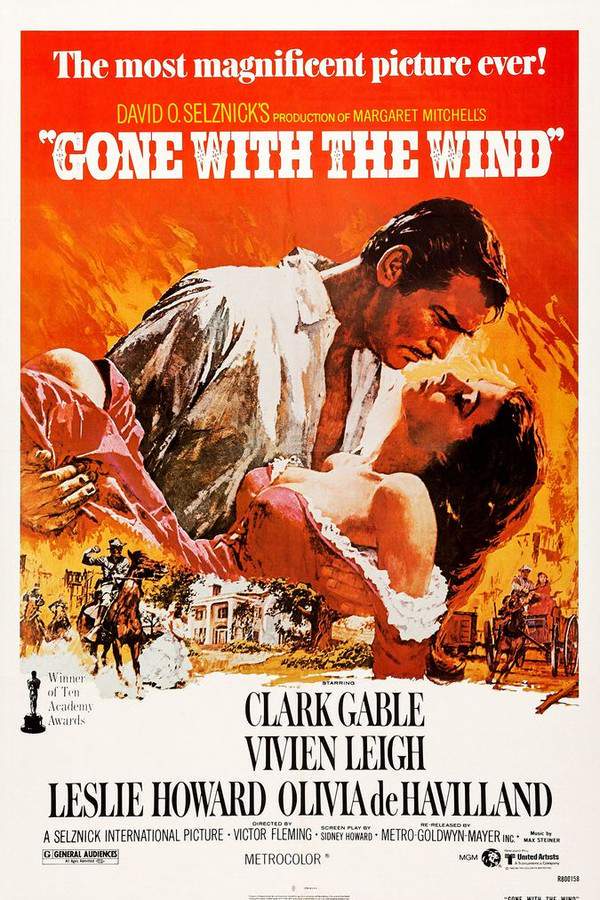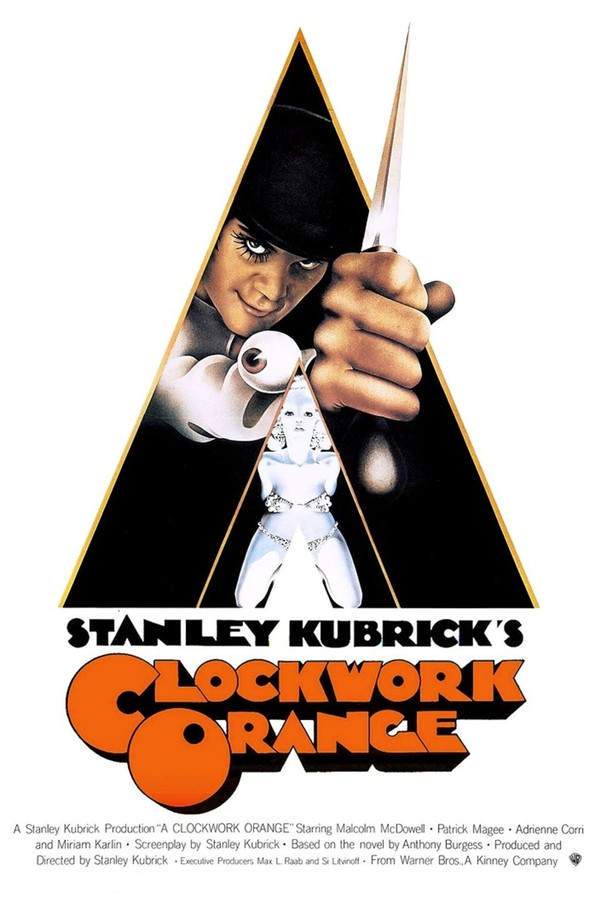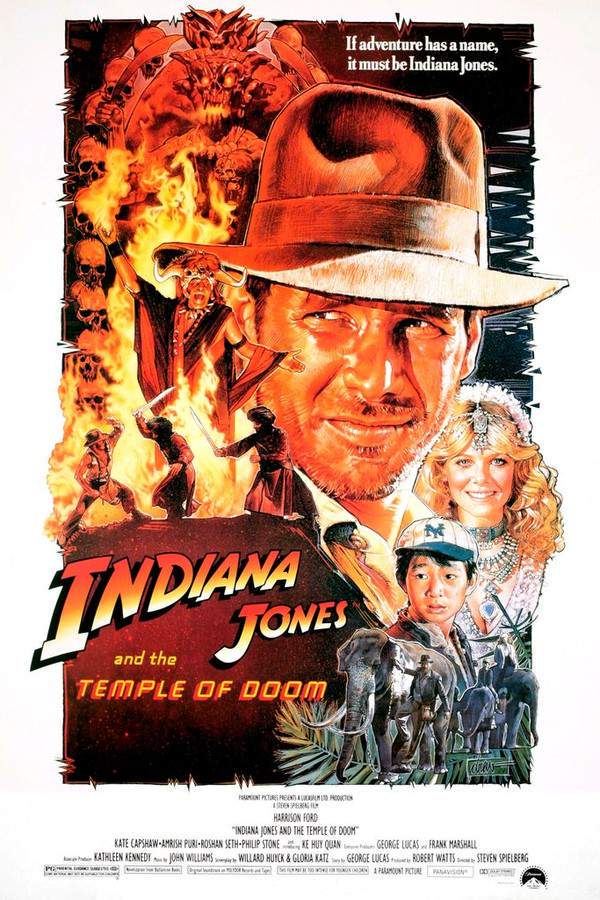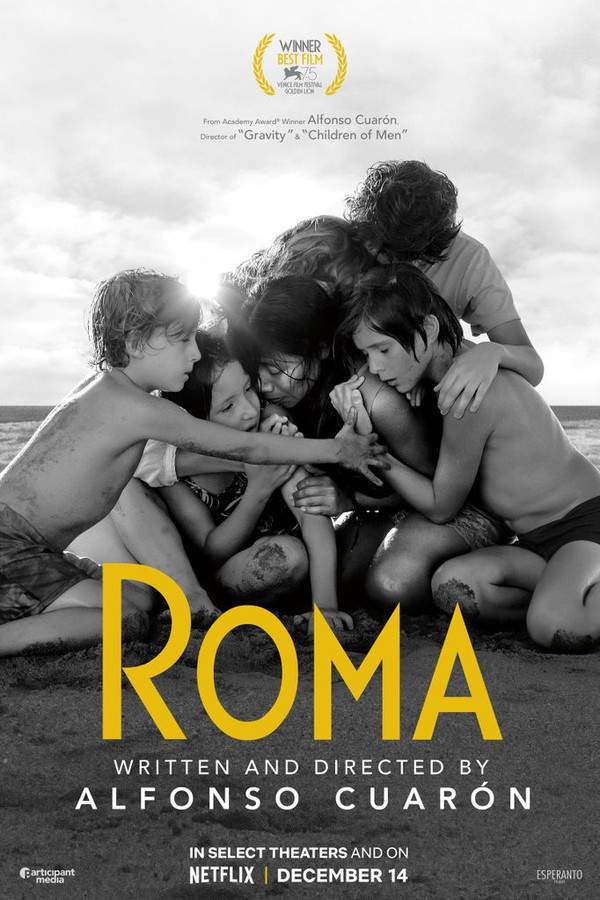What's After the Blog?
History • Criticism
The Evolution of Film Censorship Through the Decades
Delve into the compelling evolution of film censorship from the early 20th century to the digital age, examining its impact on cinema and society on What's After the Movie blog.
August 25, 2024

Movies mentioned in this article
The Evolution of Film Censorship Through the Decades
Introduction to Film Censorship
Film censorship, a practice as old as cinema itself, represents the regulation or suppression of movies deemed inappropriate or offensive by certain standards. It’s a process steeped in cultural, political, and moral complexities, reflecting the prevailing attitudes and values of the times. Initially, films were viewed as mere entertainment, but with the realization of their powerful impact on audiences, governments and organizations began to scrutinize and regulate their content.
The roots of film censorship can be traced back to the early 20th century. During the silent film era, local boards and committees, often with no formal authority, would dictate what could or couldn’t be shown. Movies like D.W. Griffith’s controversial The Birth of a Nation sparked widespread debates over racial portrayals and historical accuracy, fueling the call for a more structured approach to film censorship.
As movies gained popularity, the need for a more standardized system became apparent. Different countries developed their own systems of censorship, reflecting their unique cultural and societal norms. For instance, Britain established the British Board of Film Censors in 1912, while the U.S. saw the formation of the National Board of Review in 1909. These early forms of censorship were often reactive, responding to public outcry or political pressures, and varied greatly in their strictness and enforcement.
The Golden Age of Hollywood and the Hays Code
The Golden Age of Hollywood, roughly spanning the 1920s to the late 1950s, saw the American film industry rise to global prominence. However, this era was also marked by the establishment of one of the most notorious censorship systems: the Hays Code, formally known as the Motion Picture Production Code. Instituted in 1930 and enforced from 1934, the Hays Code was a set of moral guidelines that significantly shaped American cinema for decades.
Named after Will H. Hays, who was appointed as the first President of the Motion Picture Producers and Distributors of America (MPPDA), the Code aimed to ensure that movies would not lower the moral standards of viewers. It prohibited explicit content related to sex, violence, crime, and other subjects considered immoral. For instance, films could not show scenes of passionate kissing for more than three seconds, and villains had to always receive punishment by the end.
The influence of the Hays Code can be seen in numerous films of that era. Movies like Gone with the Wind had to navigate around the Code’s restrictions, particularly in its language and depictions of relationships. The iconic line, “Frankly, my dear, I don’t give a damn,” was almost cut due to the Code’s prohibition of profanity.
Filmmakers often found creative ways to circumvent the Code’s restrictions. Subtext and innuendo became tools to suggest forbidden themes without depicting them outright. For example, in Alfred Hitchcock’s Rebecca, the story’s dark themes of jealousy and obsession were subtly woven into the narrative, bypassing explicit depiction while retaining the story’s depth.
The Hays Code significantly impacted not only the content but also the artistic expression within films. While it restricted certain aspects, it also pushed filmmakers to innovate in storytelling and cinematography to convey their messages within the allowed boundaries.
In the following sections, we will delve into the decline of the Hays Code, the rise of the modern rating systems, and the varying effects of film censorship on different genres. Join us as we continue to explore this intricate aspect of cinematic history.
The 1960s: A Turning Point in Film Censorship
The 1960s marked a significant shift in the landscape of film censorship. This era, characterized by cultural revolutions and challenges to traditional norms, saw the gradual decline of the Hays Code and the emergence of the modern movie rating system. The change was driven by a combination of factors: the growing influence of international cinema, which often featured more liberal content, and a general societal push towards freedom of expression and artistic liberty.
In 1968, the Hays Code was replaced by the Motion Picture Association of America’s (MPAA) film rating system. This new system, still in use today, categorizes films based on their content suitability for different age groups. The MPAA ratings, ranging from G (General Audiences) to NC-17 (No One 17 and Under Admitted), offered a more nuanced approach to film content, allowing a wider range of themes and depictions while informing audiences about the nature of the film’s content.
This era saw films pushing the boundaries of what was considered acceptable. Movies like Who’s Afraid of Virginia Woolf? and The Graduate addressed themes of marital strife, adultery, and generational conflict, which would have been impossible under the strictures of the Hays Code. Directors like Stanley Kubrick with A Clockwork Orange explored violent and sexual content in a manner that sparked both controversy and critical acclaim.
The 1960s set the stage for an era of greater freedom in cinematic expression, leading to a diverse range of films that could explore complex and mature themes. This period was instrumental in shaping modern cinema, allowing filmmakers to explore a wider range of human experiences and societal issues without the fear of censorship.
”How has film censorship affected the portrayal of violence and sex in movies?”
The influence of film censorship on the portrayal of violence and sex in movies is a complex and evolving issue. Initially, censorship heavily restricted such content, leading filmmakers to either avoid these themes or find subtle ways to include them. However, as censorship rules have relaxed over the decades, there has been a notable increase in explicit content in mainstream cinema.
Under the Hays Code, even the slightest hint of sexual content or excessive violence was taboo. This led to the era of implied violence and off-screen sex, where filmmakers had to rely on suggestion rather than explicit depiction. For example, in Alfred Hitchcock’s Psycho, the famous shower scene ingeniously implies violence without ever showing the knife penetrating flesh.
As censorship rules relaxed, particularly in the late 20th century, filmmakers began to include more explicit content. Films like Basic Instinct and Pulp Fiction broke new ground in their graphic portrayal of sex and violence. This shift reflected changing societal attitudes towards these themes, but also sparked debates about the impact of such content on audiences and the potential for desensitization or moral degradation.
Today, the portrayal of sex and violence in films continues to be a subject of discussion, with some arguing for the importance of artistic freedom and others concerned about the effects of graphic content. Streaming services and online platforms have further complicated the issue, as they often fall outside traditional censorship mechanisms.
In summary, the evolution of film censorship has profoundly influenced how violence and sex are portrayed in movies. From implied scenes to explicit depictions, this evolution reflects broader changes in societal attitudes and continues to be a dynamic and contested aspect of filmmaking.
As we move forward, we’ll explore the effects of home video and DVD on film censorship and how different countries have developed unique standards for film censorship. Stay with us as we continue to trace the intricate history of film censorship through the decades.
The 1980s to 2000s: Ratings and Parental Guidance
The period from the 1980s to the 2000s witnessed further evolution in film censorship, with the MPAA rating system becoming firmly established and increasingly influential in shaping film content. This era was marked by the rising importance of the PG-13 rating, introduced in 1984, which offered a middle ground between the family-friendly PG rating and the more adult R rating. The introduction of PG-13 addressed concerns about films that were too mature for younger audiences but did not warrant an R rating. Movies like Indiana Jones and the Temple of Doom and Gremlins, both of which pushed the boundaries of the PG rating, were pivotal in the creation of PG-13.
Additionally, the advent of home video and later DVD technology significantly impacted film censorship. The ability to watch movies at home changed the dynamics of movie viewing, as it brought films into a more personal and private space. This shift led to debates about the role of parents in monitoring their children’s viewing habits and the appropriateness of content in home-viewed films. Movies like American Pie and Scream, popular among teenagers, underscored the challenges of parental guidance in the age of home video.
This period also saw filmmakers increasingly pushing the limits of what was acceptable in mainstream cinema, testing the boundaries of the rating system. Controversial films such as Natural Born Killers and Fight Club sparked discussions about the depiction of violence and its potential impact on audiences. The MPAA ratings, while providing guidelines, also faced criticism for their perceived subjectivity and inconsistency.
The evolution of film censorship in these decades reflects the ongoing tension between artistic expression, commercial interests, and societal values. The rating system, intended to guide and protect audiences, also became a tool for filmmakers and studios to market their films to specific demographics, further entwining the art of cinema with the business of movie-making.
”Why do different countries have different censorship standards for films?”
Film censorship varies significantly across countries due to diverse cultural, political, and social factors. Each country’s approach to censorship reflects its unique values, norms, and historical contexts. For instance, what is considered acceptable in one country might be deemed offensive or inappropriate in another, leading to different censorship standards and practices.
Cultural differences play a major role in shaping censorship standards. For example, European countries like France and Germany are known for their relatively liberal approach to sexual content compared to countries like the United States, where violence is often more acceptable than explicit sexual scenes. Asian countries like China and India have their own sets of rules, often influenced by cultural norms and political considerations. In China, for instance, censorship is heavily influenced by the government’s desire to maintain social harmony and political stability, leading to the exclusion of content that challenges state ideology or social morals.
Political and legal systems also influence censorship. Democracies tend to have more liberal censorship laws, allowing for a wider range of artistic expression, while authoritarian regimes often impose stricter controls to maintain governmental power and suppress dissenting or alternative viewpoints. Movies like Persepolis and Fahrenheit 9/11, which offer critiques of political systems, may be celebrated in some countries but banned or heavily censored in others.
The variation in censorship standards across countries highlights the complex interplay between cinema and the societal context in which it is produced and consumed. Understanding these differences is crucial for filmmakers who aim to reach international audiences and for viewers seeking to appreciate the diverse landscape of global cinema.
In the next sections, we will explore the role of streaming services in the current landscape of film censorship and ponder the future of censorship in cinema. Join us as we continue to navigate the complex and ever-changing world of film censorship.
Film Censorship in the Digital Age
The advent of the digital age and the rise of streaming services have brought about significant changes in the realm of film censorship. With the proliferation of online platforms like Netflix, Amazon Prime, and Hulu, traditional censorship models have been challenged, leading to a new landscape where the boundaries of content regulation are continually being redrawn.
In this digital era, streaming services operate with a different set of rules compared to traditional cinemas and television networks. They often fall outside the jurisdiction of national censorship boards, giving filmmakers more freedom to explore diverse and controversial themes. This has led to the production of groundbreaking content that pushes the envelope, as seen in series like Black Mirror and movies like Roma, which tackle complex social and political issues with a boldness rarely seen in conventional cinema.
However, this newfound freedom is not without its challenges. Streaming services, while providing a platform for diverse voices, also face the dilemma of self-regulation. They must balance the desire for creative expression with the need to be sensitive to different cultures and norms, especially when catering to a global audience. This has led to instances where content is modified or removed based on regional sensitivities, as seen with the varying international versions of shows like 13 Reasons Why.
The digital age has also empowered audiences to voice their opinions more loudly than ever before. Social media platforms allow viewers to critique, discuss, and campaign for or against certain content, sometimes leading to changes in how films and shows are presented. This interactive dynamic between creators, platforms, and audiences is a defining characteristic of film censorship in the digital age, marking a shift from top-down regulation to a more participatory form of content moderation.
The Future of Film Censorship
As we look towards the future, it’s clear that film censorship will continue to evolve in response to changes in technology, societal norms, and viewing habits. The rise of virtual and augmented reality, for instance, promises new frontiers for cinematic storytelling, potentially challenging existing censorship paradigms in unprecedented ways.
One emerging trend is the move towards more nuanced and context-sensitive approaches to censorship. Instead of broad classifications, there may be a shift towards more personalized content filtering, allowing viewers to tailor their viewing experiences according to their preferences and sensitivities. This could lead to a more individualized approach to content regulation, harnessing technology to give viewers greater control over what they watch.
Moreover, the ongoing debate around the impact of film content on society – particularly concerning violence, sex, and mental health – will continue to influence censorship practices. As our understanding of these issues deepens, and as societal attitudes continue to shift, we can expect ongoing discussions and adjustments in how films are regulated and consumed.
In conclusion, the future of film censorship is likely to be characterized by a balancing act between creative freedom, technological innovation, and social responsibility. As the landscape of cinema and media continues to transform, so too will the ways in which we navigate the complex interplay of art, expression, and regulation.
Stay with us as we conclude our exploration of the evolution of film censorship in our final section, reflecting on the ongoing significance of censorship in shaping film content and inviting you to discover more about the world of cinema through our other blog posts on What’s After the Movie.
The Role of Audiences in Shaping Film Censorship
In the dynamic world of film censorship, the role of the audience has become increasingly significant. With the advent of social media and digital platforms, viewers are no longer passive recipients of content; they are active participants in the censorship dialogue. Audience reactions, whether through social media commentary, online petitions, or viewership patterns, can have a profound impact on how films are censored and distributed.
The power of audience influence is evident in several instances where public outcry has led to changes in film content or rating. For example, the release of Joker sparked widespread debates about its portrayal of violence and mental health, leading to discussions about its rating and accessibility. Similarly, the initial release of Sonic the Hedgehog saw significant backlash due to the character’s design, prompting the filmmakers to alter Sonic’s appearance in response to fan feedback.
This shift towards audience-driven censorship reflects a broader trend in media consumption. As viewers become more vocal and empowered to express their opinions, filmmakers and studios are increasingly mindful of public sentiment. This can lead to a more democratized form of censorship, where audience feedback directly influences content moderation decisions.
However, this power comes with challenges. The diverse nature of global audiences means that filmmakers must navigate a complex array of cultural sensitivities and preferences. What is acceptable and applauded by one group may be considered offensive or inappropriate by another. Balancing these differing viewpoints while maintaining artistic integrity and freedom of expression remains a key challenge in this new era of audience-influenced censorship.
The Intersection of Censorship, Art, and Commerce
The relationship between censorship, art, and commerce in cinema is intricate and often contentious. Censorship decisions can significantly impact a film’s artistic direction, narrative choices, and ultimately, its commercial success. Filmmakers and studios must constantly navigate the fine line between adhering to censorship norms and preserving their creative vision.
From an artistic standpoint, censorship can be seen both as a constraint and a catalyst for creativity. Restrictions imposed by censorship can compel filmmakers to find innovative ways to express their ideas within the accepted boundaries. This creative circumvention has led to some of the most iconic and enduring moments in cinema history. However, excessive censorship can also stifle artistic expression, leading to diluted narratives and compromised storytelling.
On the commercial front, censorship can directly affect a film’s box office potential and market reach. Films that adhere to stricter censorship standards may find it easier to access wider markets and larger audiences, but at the risk of losing depth and authenticity. Conversely, films that push the boundaries of censorship may garner critical acclaim and a dedicated following but face challenges in wider distribution, particularly in more conservative markets.
The evolution of film censorship is thus not just a reflection of changing moral and societal norms but also a barometer of the ongoing tussle between artistic freedom and commercial viability. As the film industry continues to evolve, this complex interplay of censorship, art, and commerce will remain a central theme in the discourse around cinema.
In our concluding section, we will reflect on the ongoing significance of censorship in shaping film content and invite you to explore more about the cinematic world through our other engaging blog posts on What’s After the Movie.
Continue reading

What's After the Movie?
Not sure whether to stay after the credits? Find out!
Explore Our Movie Platform
New Movie Releases (2025)
Famous Movie Actors
Top Film Production Studios
Movie Plot Summaries & Endings
Major Movie Awards & Winners
Best Concert Films & Music Documentaries
Movie Collections and Curated Lists
© 2025 What's After the Movie. All rights reserved.





























